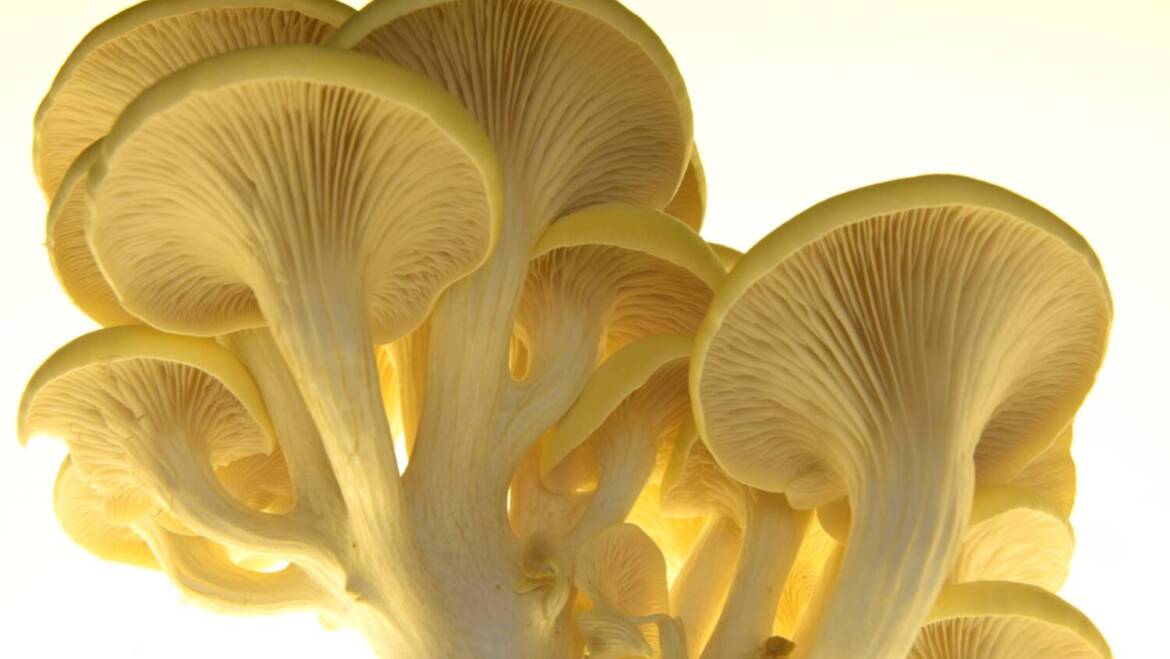In the ever-evolving landscape of nutritional science, emerging stars capture the attention of researchers and health enthusiasts alike. One such star is Ergothioneine, often called ERGO, a unique amino acid making waves for its impressive antioxidant and anti-inflammatory properties. But what exactly is ERGO, and why should you care about it? Let’s dive in!
What is Ergothioneine?
Ergothioneine is a naturally occurring amino acid with powerful antioxidant capabilities. Unlike many other antioxidants, ERGO is not produced by the human body or most animals; we can only obtain it through our diet. This fact alone makes it a vital nutrient for overall health and well-being.
The Penn State Revelation
Researchers at Penn State University highlighted the growing scientific interest in ERGO. Their studies revealed that this amino acid is not abundant in many dietary sources, making it a rare but precious nutrient. The scarcity of ERGO in typical diets has piqued the curiosity of scientists eager to explore its potential health benefits.
Why Should You Include ERGO in Your Diet?
The antioxidant and anti-inflammatory potential of ERGO can have far-reaching effects on your health. Antioxidants help combat oxidative stress linked to various chronic diseases and aging. Anti-inflammatory properties can reduce inflammation, potentially lowering the risk of arthritis, heart disease, and certain cancers.
ERGO and Aging: What’s the Connection?
One of the most intriguing aspects of Ergothioneine is its potential role in combating aging. Here’s how ERGO might influence the aging process:
- Antioxidant Protection: Aging is often associated with increased oxidative stress, which damages cells and contributes to aging and age-related diseases. ERGO’s potent antioxidant properties help neutralise free radicals, thereby protecting cells from oxidative damage and potentially slowing aging.
- Anti-inflammatory Effects: Chronic inflammation is another key factor in aging and many age-related diseases. ERGO’s anti-inflammatory properties help reduce inflammation, potentially mitigating its adverse effects on the body and slowing the progression of diseases such as arthritis, cardiovascular diseases, and neurodegenerative disorders.
- Cellular Protection: ERGO has been found to accumulate in cells and tissues, particularly in mitochondria, the powerhouses of cells. This accumulation helps protect cells from oxidative damage and enhances their function, crucial for maintaining cellular health and longevity.
Mushrooms: Nature’s ERGO Powerhouse
So, where can you find ERGO? The answer lies in mushrooms, particularly Oyster mushrooms. These fungi have been discovered to contain high amounts of Ergothioneine, making them a superfood in their own right. The mycelium, or the root-like structure of fungi, is believed to play a crucial role in spreading ERGO to other plants, enriching the ecosystem with this valuable compound.
Yellow Oyster mushrooms stand out as the ultimate ERGO champions among the various types of Oyster mushrooms. They contain the highest amounts of Ergothioneine, surpassing even their fellow Oyster mushroom varieties. This makes Yellow Oyster mushrooms a nutritional powerhouse and an excellent addition to your diet if you aim to boost your antioxidant intake naturally.
Incorporating Yellow Oyster Mushrooms into Your Diet
Yellow Oyster mushrooms are a nutritional powerhouse known for their high Ergothioneine (ERGO) content, contributing to their antioxidant and anti-inflammatory benefits. However, if Yellow Oyster mushrooms are not readily available in your local grocery store, there are several ways to incorporate more of these beneficial fungi into your diet:
1. Online Retailers
Many specialty stores and online retailers offer fresh or dried Yellow Oyster mushrooms. You can purchase them fresh, dried, or powdered, which can be used in cooking or as a supplement.
2. Farmers’ Markets
Check out local farmers’ markets or community markets where local growers might sell a variety of mushrooms, including Yellow Oyster mushrooms. Some vendors specialise in fungi and may offer these mushrooms seasonally.
3. Grow Your Own
Growing Yellow Oyster mushrooms at home is a rewarding option if you have space. Mushroom cultivation kits are available online and in some garden centres. These kits contain everything you need to grow mushrooms, including spores and growing medium. Yellow Oyster mushrooms grow relatively quickly and can be a fun project.
4. Use Mushroom Powder
Consider using mushroom powder if fresh or dried Yellow Oyster mushrooms are unavailable. Mushroom powders, including those made from Yellow Oyster mushrooms, can be added to soups, sauces, smoothies, and other dishes to boost flavour and nutrition.
5. Explore Alternative Sources
If Yellow Oyster mushrooms are hard to come by, consider incorporating other types of mushrooms into your diet. While they may not have the same high ERGO content as Yellow Oysters, mushrooms like Shiitake, Maitake, and Lion’s Mane offer significant health benefits and can be found more easily in stores.
6. Local Mushroom Farms
Find out if there are any local mushroom farms in your area. They might have Yellow Oyster mushrooms or be able to order them for you.
Can You Get ERGO in a Diet Without Mushrooms?
The short answer is it’s challenging. Ergothioneine is primarily found in mushrooms and some fungi. While there are trace amounts of ERGO in certain other plant-based foods, such as some beans and grains, the levels are significantly lower compared to mushrooms. Therefore, for those seeking to maximise their ERGO intake, incorporating mushrooms, particularly Yellow Oyster mushrooms, is the most effective approach.
However, if you prefer not to consume mushrooms, focusing on a varied and nutrient-dense diet can still support overall antioxidant intake through other sources such as:
- Legumes and Beans: While not as rich in ERGO, they provide other antioxidants and nutrients.
- Whole Grains: Certain grains like oats and barley contain small amounts of ERGO.
- Nuts and Seeds: These offer a variety of antioxidants, healthy fats, and proteins.
Ergothioneine in Oyster Mushroom Powder Supplements
For those who may not enjoy the texture or taste of whole mushrooms, oyster mushroom powder supplements offer a convenient alternative. The good news is that Ergothioneine remains biologically available in these supplements. This means you can still reap the antioxidant and anti-inflammatory benefits of ERGO, even in powdered form.
Research indicates that drying and powdering mushrooms does not significantly diminish their ERGO content. Therefore, oyster mushroom powder can be a practical and effective way to incorporate this powerful amino acid into your diet.
Potential Side Effects and Contraindications
While Ergothioneine is generally considered safe, it’s essential to be aware of potential side effects and contraindications associated with its consumption, either through supplements or increased mushroom intake:
- Allergic Reactions: Some individuals may be allergic to mushrooms. Symptoms can include itching, swelling, difficulty breathing, and gastrointestinal distress. Monitoring for allergic reactions when increasing mushroom consumption or taking mushroom-based supplements is crucial.
- Digestive Issues: Consuming large amounts of mushrooms can sometimes cause digestive discomfort, including bloating, gas, and diarrhea, particularly in individuals who have sensitive digestive systems.
- Medication Interactions: Ergothioneine may interact with certain medications. If you are taking prescription drugs, particularly those that affect the immune system or blood clotting, consult your healthcare provider before adding Ergothioneine supplements or significantly increasing your mushroom intake.
- Excessive Consumption: While mushrooms are nutritious, excessive consumption is not recommended. Balanced intake is key to avoiding potential nutrient imbalances and ensuring a varied and healthy diet.
- Unknown Long-Term Effects: As with any supplement, the long-term effects of high-dose Ergothioneine supplementation still need to be fully understood. More research is required to determine safe upper limits and potential long-term impacts.
Conclusion
Ergothioneine may be a household name later, but its benefits are undeniable. With ongoing research and increased awareness, we may soon see ERGO take its place among the most valued nutrients in our diets. So, next time you’re at the farmers’ market or browsing online for fresh produce, add some Yellow Oyster mushrooms or oyster mushroom powder supplements to your cart. Your body will thank you for it!
Stay tuned for more updates on the fascinating world of mushrooms and their incredible health benefits.
References
- Bohnn, K. (2023). Is a little-known amino acid concentrated in mushrooms the key to healthy aging? Penn State
- Barry Halliwell, Irwin K. Cheah, Richard M. Y. Tang. (2018). “Ergothioneine, a diet-derived antioxidant with therapeutic potential.” FEBBS Press.
- Kalaras, M. D., Richie, J. P., Calcagnotto, A., & Beelman, R. B. (2017). “Mushrooms: A rich source of the antioxidants ergothioneine and glutathione.” Food Chemistry.
- Cheah, I. K., & Halliwell, B. (2012). “Ergothioneine; antioxidant potential, physiological function and role in disease.” Biochimica et Biophysica Acta (BBA) – Molecular Basis of Disease.
- Bindu D. Pau (2022). “Ergothioneine: A Stress Vitamin with Antiaging, Vascular, and Neuroprotective Roles?” National Library of Medicine.



